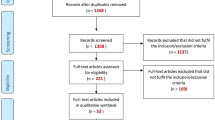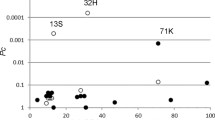Abstract
Pemphigus foliaceus (PF) is a rare and severe cutaneous autoimmune disease caused by autoantibodies directed against desmoglein 1 (DSG1), a desmosomal adhesion glycoprotein. We previously showed that the DSG1 gene is polymorphic and that a coding synonymous T/C single nucleotide polymorphism at position 809 is associated with PF. To determine whether the disease occurred as a consequence of complex genetic interactions, we simultaneously examined the contribution of major histocompatibility complex (MHC) class II and DSG1 polymorphisms to PF susceptibility. Our analysis performed in 31 PF patients and 84 healthy controls first confirmed the previously reported common DRB1*04 and DRB1*14 genetic background in PF and individualized DRB1*0102, DRB1*0402 and DRB1*0406, and DRB1*1404 as susceptibility MHC class II alleles in French Caucasian PF patients. It also showed that the C/C(809) genotype was associated with PF. Combined analysis of HLA class II and DSG1 polymorphisms with several distinct statistical methods including logistic regression, showed that the DRB1*04 allele and the C/C(809) genotype interact to confer a higher susceptibility to PF. These data demonstrate the role of epistasis between individual genes in PF susceptibility and illustrate the genetic complexity of organ-specific autoimmune diseases.
This is a preview of subscription content, access via your institution
Access options
Subscribe to this journal
Receive 6 digital issues and online access to articles
$119.00 per year
only $19.83 per issue
Buy this article
- Purchase on Springer Link
- Instant access to full article PDF
Prices may be subject to local taxes which are calculated during checkout


Similar content being viewed by others
References
Marrack P, Kappler J, Kotzin BL . Autoimmune disease: why and where it occurs Nat Med 2001 7: 899–905
Todd JA . From genome to aetiology in a multifactorial disease, type 1 diabetes Bioessays 1999 21: 164–174
Garchon HJ, Djabiri F, Viard JP, Gajdos P, Bach JF . Involvement of human muscle acetylcholine receptor alpha-subunit gene (CHRNA) in susceptibility to myasthenia gravis Proc Natl Acad Sci USA 1994 91: 4668–4672
Djabiri F, Caillat-Zucman S, Gajdos P et al. Association of the AChRalpha-subunit gene (CHRNA), DQA1*0101, and the DR3 haplotype in myasthenia gravis. Evidence for a three-gene disease model in a subgroup of patients J Autoimmun 1997 10: 407–413
Martel P, Joly P . Pemphigus: autoimmune diseases of desmosome Clinics in Dermatol 2001 19: 662–674
Wheeler GN, Parker AE, Thomas CL et al. Desmosomal glycoprotein DGI, a component of intercellular desmosome junctions, is related to the cadherin family of cell adhesion molecules Proc Natl Acad Sci USA 1991 88: 4796–4800
Amagai M, Hashimoto T, Green KJ, Shimizu N, Nishikawa T . Antigen-specific immunoadsorption of pathogenic autoantibodies in pemphigus foliaceus J Invest Dermatol 1995 104: 895–901
Amagai M, Tsunoda K, Zillikens D, Nagai T, Nishikawa T . The clinical phenotype of pemphigus is defined by the anti-desmoglein autoantibody profile J Am Acad Dermatol 1999 40: 167–170
Ishii K, Amagai M, Hall RP et al. Characterization of autoantibodies in pemphigus using antigen-specific enzyme-linked immunosorbent assays with baculovirus-expressed recombinant desmogleins J Immunol 1997 159: 2010–2017
Mahoney MG, Wang ZH, Stanley JR . Pemphigus vulgaris and pemphigus foliaceus antibodies are pathogenic in plasminogen activator knockout mice J Invest Dermatol 1999 113: 22–25
Mahoney MG, Wang Z, Rothenberger K, Koch PJ, Amagai M, Stanley JR . Explanations for the clinical and microscopic localization of lesions in pemphigus foliaceus and vulgaris J Clin Invest 1999 103: 461–468
Lin MS, Fu CL, Aoki V et al. Desmoglein-1-specific T lymphocytes from patients with endemic pemphigus foliaceus (fogo selvagem) J Clin Invest 2000 105: 207–213
Moraes JR, Moraes ME et al. HLA antigens and risk for development of pemphigus foliaceus (fogo selvagem) in endemic areas of Brazil Immunogenetics 1991 33: 388–391
Moraes ME, Fernandez-Vina M, Lazaro A et al. An epitope in the third hypervariable region of the DRB1 gene is involved in the susceptibility to endemic pemphigus foliaceus (fogo selvagem) in three different Brazilian populations Tissue Antigens 1997 49: 3540
Loiseau P, Lecleach L, Prost C et al. HLA class II polymorphism contributes to specify desmoglein derived peptides in pemphigus vulgaris and pemphigus foliaceus J Autoimmun 2000 15: 67–73
Lombardi ML, Mercuro O, Ruocco V et al. Common human leukocyte antigen alleles in pemphigus vulgaris and pemphigus foliaceus Italian patients J Invest Dermatol 1999 113: 107–110
Miyagawa S, Amagai M, Niizeki H et al. HLA-DRB1 polymorphism and autoimmune responses to desmogleins in Japanese patients with pemphigus Tissue Antigens 1999 54: 333–340
Martel P, Gilbert D, Drouot L et al. A polymorphic variant of the gene coding desmoglein 1, the target autoantigen of pemphigus foliaceus, is associated with the disease Genes Immun 2001 2: 41–43
Wakeland EK, Wandstrat AE, Liu K, Morel L . Genetic dissection of systemic lupus erythematosus Curr Opin Immunol 1999 11: 701–707
Gaffney PM, Kearns GM, Shark KB et al. A genome-wide search for susceptibility genes in human systemic lupus erythematosus sib-pair families Proc Natl Acad Sci USA 1998 95: 14875–14879
Morel L, Tian XH, Croker BP, Wakeland EK . Epistatic modifiers of autoimmunity in a murine model of lupus nephritis Immunity 1999 11: 131–139
Bennett ST, Lucassen AM, Gough SC et al. Susceptibility to human type 1 diabetes at IDDM2 is determined by tandem repeat variation at the insulin gene minisatellite locus Nat Genet 1995 9: 284292
Lin MS, Swartz SJ, Lopez A, Ding X, Fairley JA, Diaz LA . T lymphocytes from a subset of patients with pemphigus vulgaris respond to both desmoglein-3 and desmoglein-1 J Invest Dermatol 1997 109: 734–737
Cordell HJ, Todd JA, Bennett ST, Kawaguchi Y, Farrall M . Two-locus maximum lod score analysis of a multifactorial trait: joint consideration of IDDM2 and IDDM4 with IDDM1 in type 1 diabetes Am J Hum Genet 1995 57: 920–934
Wucherpfennig KW, Yu B, Bhol K et al. Structural basis for major histocompatibility complex (MHC)-linked susceptibility to autoimmunity: charged residues of a single MHC binding pocket confer selective presentation of self-peptides in pemphigus vulgaris Proc Natl Acad Sci USA 1995 92: 11935–11939
Joly P, Thomine E, Gilbert D et al. Overlapping distribution of autoantibody specificities in paraneoplastic pemphigus and pemphigus vulgaris J Invest Dermatol 1994 103: 65–72
Jiao D, Bystryn JC . Sensitivity of indirect immunofluorescence, substrate specificity, and immunoblotting in the diagnosis of pemphigus J Am Acad Dermatol 1997 37: 211–216
Mercier B, al Daccak R, Samaan A et al. HLA-DRB and -DBQ typing by PCR amplification using sequence-specific primers (PCR-SSP): assessment after 1 year of routine use by three laboratories Eur J Immunogenet 1994 21: 105–123
Mantel N, Mocarelli P, Marocchi A, Brambilla P, Baretta R . Stratified analysis of multivariate clinical data: application of a Mantel-Haenszel approach Stat Med 1983 2: 259–266
Paul SR, Donner A . A comparison of tests of homogeneity of odds ratios in K 2 × 2 tables Stat Med 1989 8: 1455–1468
Gart JJ . Alternative analyses of contingency tables JR Stat Assoc Ser B 1966 28: 164–169
Acknowledgements
We are indebted to Dr Dominique Campion for helpful discussion and reading the manuscript, and Janet Jacobson for editing the manuscript.
Author information
Authors and Affiliations
Corresponding author
Additional information
This work has been supported by grants from the Institut National de la Santé et de la Recherche Médicale.
Authors disclose any financial interest that may constitute a conflict of interest.
Rights and permissions
About this article
Cite this article
Martel, P., Gilbert, D., Busson, M. et al. Epistasis between DSG1 and HLA class II genes in pemphigus foliaceus. Genes Immun 3, 205–210 (2002). https://doi.org/10.1038/sj.gene.6363839
Received:
Revised:
Accepted:
Published:
Issue Date:
DOI: https://doi.org/10.1038/sj.gene.6363839
Keywords
This article is cited by
-
A systematic review and meta-analysis of HLA class II associations in patients with IgG4 autoimmunity
Scientific Reports (2022)



